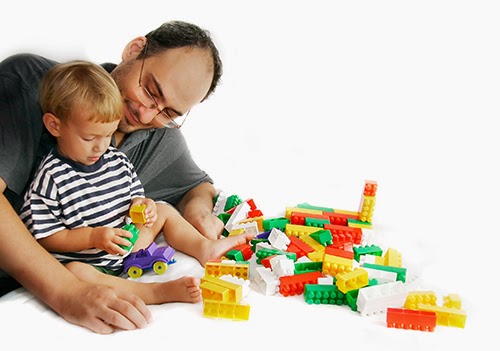When you are with your children, you are continuously observing them. Maybe you’re delightedly watching their play, maybe you’re alert to their safety, maybe you’re fretting about their behavior. Whatever the situation, you are called upon to figure out the meaning of what you observe and what your actions need to be. This is why parents can benefit from sharpening their observation skills. Observation provides you with important information about your child on which to base your actions.
Observation isn’t as easy as you would think. It involves two activities. The first is bringing your awareness and your attention to what your child is doing, which requires noticing what your senses are telling you and zeroing in on specific items of interest without forming any interpretations.
The second is making sense of what you see: bringing your understanding about your child and about children in general to bear on what your child’s behavior may be telling you, what he needs from you, and what you might do.
Here I want to focus on the first activity — bringing awareness and attention to observing your child and, at the end, leave you with guidelines for practicing this kind of observation.
AWARENESS means perceiving. We perceive with our senses, so let’s take a journey with the five senses to sharpen your understanding of the information each can give you.
Seeing: Look around you right now, nearby and far away. You may see light, shade, brightness, and motion. You may see many qualities of objects: their shape, density, depth, color, texture, contours, and size. Look around. What do you see right now?
Hearing: Notice sounds around you right now, nearby, far away, even inside your body. Some may be quiet, loud, high- or low- pitched. You may hear the human sounds of hiccups, sneezes, coughs, talking, laughing, singing. You may hear sounds that twitter, rumble, hum, chirp, whir, boom, whistle, crackle, creak. Listen. What do you hear right now?
Tasting: You may have a taste in your mouth because of something you recently ate or the state of your digestive system or health. There are five basic tastes: salty, sour, sweet, bitter, and savory. What tastes do you remember from your most recent meal? What do you taste right now?
Touching: Feel the pressure of your body on a chair, your feet on the ground, the texture of your clothes against your skin, the contact of your hands and fingertips against objects. The sense of touch includes hot, cold, pressure, vibration, texture, itch, movement, sense of position, and various kinds of pain from a scrape to a cut or burn. What do you feel right now?
Smelling: This sense tells you about the molecules floating through the air. It includes sweet, musky, floral, resinous, fruity, minty, popcorn, lemon, putrid, pungent, dry cleaning fluid, mothballs. What do you smell right now?
These sensations give you raw information about yourself and your environment. They also trigger thoughts and feelings that effortlessly arise as you perceive things. Awareness, however, is NOT about the conclusions you draw from your awareness, nor the content of the thoughts and feelings, nor your understanding of what it means, nor your opinions, beliefs, assumptions, and values.
Pure awareness is what a newborn baby has when most experiences are for the very first time. A baby doesn’t have any words to describe or explain his experience or interpretations about what the experience means. As adults, we can develop clearer awareness when we let go of the desire to pin our awareness down with interpretations and subjective thoughts that label what we’re aware of.
ATTENTION is focusing on just one element of what you are aware of. It implies withdrawing from some of what you are aware of to deeply perceive the rest. You are attending right now to what you are reading. That means you are less likely to notice sounds and smells that might be happening around you. Stop reading for a moment so you can notice the sensations you weren’t paying attention to. Think of attention as a highlighter. It allows you to “tune out” some perceptions that are not relevant at the moment and focus your awareness on information that is important to you.
Sometimes I think of this process of using awareness and attention as similar to using a camera to take a picture. The camera is pure awareness with the capacity to perceive whatever is in its view. The lens is attention that focuses on what is directly in front and brings it into focus so that the resulting picture can be seen clearly.
Here are some guidelines for practicing awareness and attention at home with your child: Set aside five to 10 minutes to observe your child quietly. Try to avoid interacting. Settle yourself comfortably and take a few deep breaths. Pick up your writing tools. Now look at your child. Focus first on what you see. Quickly jot down what you take in through your sense of sight. Record your sight awareness without judgment or interpretation. Then do the same for each of the four other senses. Refer back to the information about each sense to notice what specific information each is giving you.
Then focus your attention on one of your child’s specific behaviors. Say your child is doing a puzzle. Focus on how your child uses large and small muscles to complete the puzzle. How does she go about figuring the puzzle out? What emotions seem to come up? How does she express and deal with her emotions? How does she relate with you during the activity? How do you feel about the experience? Jot it all down. The goal is to be as objective as possible, just describing what you perceive without judgment or interpretation.
In this way, you connect with your child in his or her world and gain valuable information to bring to the challenges of parenting.




